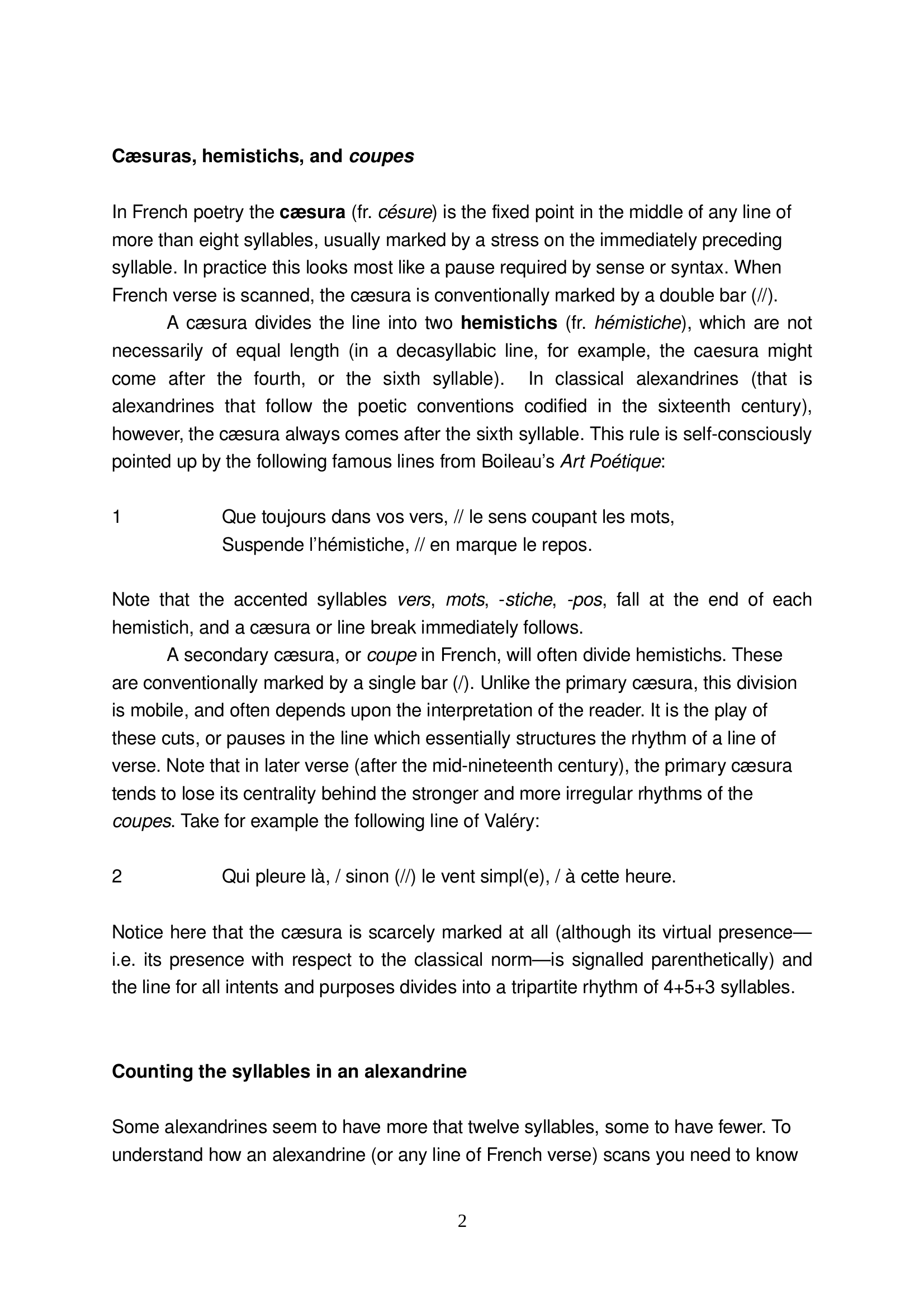french versification
Publié le 14/10/2014

Extrait du document
«
Cæsuras, hemistichs, and coupes
In French poetry the cæsura (fr. césure ) is the fixed point in the middle of any line of
more than eight syllables, usually marked by a stress on the immediately preceding
syllable. In practice this looks most like a pause required by sense or syntax. When
French verse is scanned, the cæsura is conventionally marked by a double bar (//).
A cæsura divides the line into two hemistichs (fr.
h
émistiche ), which are not
necessarily of equal length (in a decasyllabic line, for example, the caesura might
come after the fourth, or the sixth syllable).
In classical alexandrines (that is
alexandrines that follow the poetic conventions codified in the sixteenth century),
however, the cæsura always comes after the sixth syllable. This rule is selfconsciously
pointed up by the following famous lines from Boileau’s Art Po
étique :
1 Que toujours dans vos vers, // le sens coupant les mots,
Suspende l’h
émistiche, // en marque le repos.
Note that the accented syllables vers , mots , stiche , pos , fall at the end of each
hemistich, and a cæsura or line break immediately follows.
A secondary cæsura, or coupe in French, will often divide hemistichs. These
are conventionally marked by a single bar (/). Unlike the primary cæsura, this division
is mobile, and often depends upon the interpretation of the reader. It is the play of
these cuts, or pauses in the line which essentially structures the rhythm of a line of
verse. Note that in later verse (after the midnineteenth century), the primary cæsura
tends to lose its centrality behind the stronger and more irregular rhythms of the
coupes . Take for example the following line of Val
éry:
2 Qui pleure l
à, / sinon (//) le vent simpl(e), / à cette heure.
Notice here that the cæsura is scarcely marked at all (although its virtual presence—
i.e.
its presence with respect to the classical norm—is signalled parenthetically) and
the line for all intents and purposes divides into a tripartite rhythm of 4+5+3 syllables.
Counting the syllables in an alexandrine
Some alexandrines seem to have more that twelve syllables, some to have fewer. To
understand how an alexandrine (or any line of French verse) scans you need to know
2.
»
↓↓↓ APERÇU DU DOCUMENT ↓↓↓
Liens utiles
- Outils d’analyse : la versification
- Comprendre la versification
- Langue et versification dans les Fables de La Fontaine
- French Open - Sport.
- vers. n.m., élément de base de la versification, caractérisé par

































